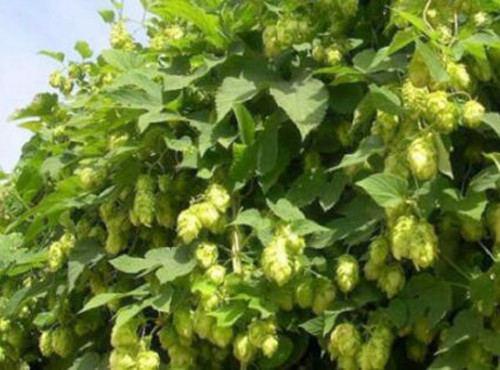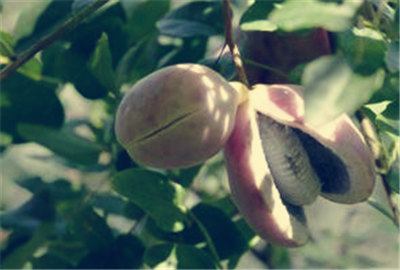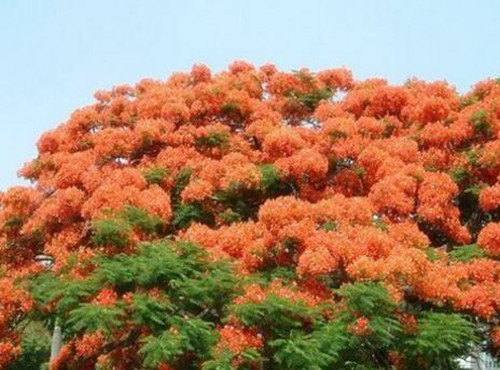How much is hops per jin in Moraceae? How to plant it? What are the effects and effects?
Hop is a perennial climbing herb of Moraceae and Rabdosia, with dense tomentose stems, branches and petioles and barbed thorns. Native to Europe, America and Asia. It is distributed in China and northern Sichuan, and is cultivated in all parts of China. So, how much is hops per jin? How to plant it? What are the effects and effects? It is understood that the price of hops is more than ten yuan per jin, and the price will be different in different regions.

How to grow hops?
⒈ site selection: according to the growth characteristics of hops, select the land with thick soil layer, and establish the hop garden near the drying room where it is convenient for transportation.
⒉ soil preparation: before planting, the plot was turned 25-30 cm deep, ditched mechanically, and the depth and width of the ditch were 50 cm. 3000 kg of farm manure was applied to the newly planted hops field, which was evenly applied in the ditch and mixed with the topsoil.
⒊ scaffolding selection: scaffolding is divided into low scaffolding and high scaffolding.
① low scaffolding requires that cement columns with a length of 3 meters be buried in the garden at a certain distance, buried in the soil 80-100cm, the surrounding side columns are thickened and properly tilted outward, the side column specifications are 12 × 12 × 300cm, tie the wire, and the wire is selected with 1 inch wire. The upper end of the column is fixed with wire or angle iron, and the rack pulls a piece of wire every 45 centimeters. This kind of frame shape is relatively low, less investment, strong wind resistance, less weeds, but poor ventilation and light transmission conditions, affecting the quality of hops, thinning branches and leaves are more labor-consuming.
The basic structure of ② high scaffolding is the same as that of low scaffolding, except that the columns are high, the distance between columns is large, and the specification of side columns is 12 × 12 × 350cm. This frame has good ventilation and light transmittance, exuberant plant growth, and is convenient for mechanized management, but it has a large investment and requires a high level of mechanized management.
⒋ colonization:
The planting time of ⑴: the average temperature in early spring is 10-12 ℃, and it is usually in the first and middle of April in our county.
⑵ planting method: according to the difference of climatic conditions, variety and frame shape, the plant spacing in the current year is 0.5m, the row spacing is 2.5m-3m, and one plant is thinned out every other plant in the next year, so that the plant spacing is kept at about 1m. Soak the seedlings in 0.5% Bordeaux solution for 5 minutes before planting to prevent disease and insect infection. When planting, it was planted in the center of the ditch with 45 °to the sun, and the top of the seedling was covered with soil 10-12 cm from the surface, then covered with soil 5 cm after filling, and irrigated after planting. Unearthed about 20 days after planting in spring, the emergence of seedlings should be checked in time and replanted as early as possible.
⒌ coating:
⑴ chooses the plastic film which is 1.4cm wide and more than 0.008 mm thick.
After ⑵ planting, when there is no stagnant water in the ditch, the film should be laid in time. In order to ensure the effect of film laying, a wooden stick or other support can be set up at a certain distance on the ditch to play a supporting role. When laying the film, press the edge of the film well to prevent it from being rolled up by the wind.
⑶ wait for the seedlings in the ditch to grow to about 20 cm, release the seedlings in time, and seal the membrane mouth when releasing the seedlings.
In the middle and late June of ⑷, the membrane was broken and the residual film was recovered in time when the seedlings grew to about 2 meters.
⒍ field management
⑴ cutting buds: is to cut off excess buds and leave a few strong buds, so that nutrients are concentrated on these strong buds to develop into strong aboveground stems and underground roots, and to remove rotten roots, diseased roots and insect pupae. Buds are cut in most parts of China in spring, which should be cut sooner rather than later, and the cutting time should not be delayed too long. The method is to dig up the soil around the rhizome until all the old roots are exposed, then use a wooden knife to clear the soil outside the pit, use a sharp bud cutter to cut off the new rhizome or rotten root at 1.5-2 cm, leaving only 5-8 strong buds in the new and old rhizome. The cutting edge of the sprout knife is required to be smooth. Do not cut the rhizome and dry it for 1-2 hours before covering the soil.
⑵ interseedlings and fixed seedlings: after the seedlings were unearthed, the seedlings began to grow, and the height of the seedlings was about 20 cm. The number of seedlings left depends on soil fertility, variety, plant row spacing and frame shape, etc. Generally, there are 2-3 trees per plant in the plots with large plant distance and high height.
⑶ collar vine: when the seedling height is 40-60 cm, tie the branches and vines to the lead wire according to their growth habits with thin cables or plastic ropes, once every 3-5 days. Do it when the plant wilts slightly on a sunny day to prevent breaking the branches. When the seedling is 2 meters high, it begins to thinning branches and leaves, thinning the side vines below the lead wire and the overdense, overlapping and infected branches and leaves, making them ventilated and transparent, promoting the growth of the main vines and reducing disease infection.
⑷ irrigation: if there is a lack of water during the growth period and before overwintering, it will have an impact on growth and yield, especially at the flowering stage, which must be irrigated about 7-8 times during the whole growing period.
⑸ fertilization: fertilization can be combined with irrigation. Nitrogen fertilizer was applied at seedling stage, 10-15 kg per mu, compound fertilizer was applied once at budding stage and flowering stage. 8-10 kg per mu, apply organic fertilizer before overwintering, about 3000 kg per mu.
⑹ intermediate ploughing and weeding: weeding should be carried out in time after every irrigation or rain, generally deep hoeing in the early and late growth stages and shallow hoeing in the flowering period to avoid root damage and affect the yield.
What are the effects and functions of hops?
1. Medicinal use
Immature green ear (hops): bitter, slightly cool. Invigorating the stomach and digestion, calming the nerves and diuresis. For indigestion, abdominal distension, edema, pain in urination, tuberculosis, insomnia.
two。 Garden
Used for climbing flower racks or hedges. Among them, the female inflorescence can make dried flowers.
3. Edible
Flowers are the raw material for brewing beer. Hops play an irreplaceable role in beer brewing.
Time: 2019-03-20 Click:
- Prev

How much is trifoliate akebia market price? How many months does it usually bear fruit? What are the planting prospects?
Akebia trifoliata is distributed in Hebei, Shanxi, Shandong, Henan, southern Shaanxi, southeastern Gansu and Yangtze River Basin provinces and regions in China. So how much is the market price of trifoliate aristolochia? How many months does it usually bear fruit? What about the planting prospects? The details are as follows: Akebia trifoliata generally blossoms in April-May and bears fruit in July-August
- Next

How much is the price of Phoenix wood seeds per jin? How to plant it? When will it blossom? What are the effects and effects?
Phoenix wood is also known as buttercup, safflower couplet tree, fire tree, foreign oyster and so on. It is distributed in southern and southwest China, Madagascar of origin and tropical places around the world. It is regarded as one of the most colorful trees in the world. So, how much is the price of Phoenix wood seeds per jin? How to plant it? Bloom in a few months
Related
- Fuxing push coffee new agricultural production and marketing class: lack of small-scale processing plants
- Jujube rice field leisure farm deep ploughing Yilan for five years to create a space for organic food and play
- Nongyu Farm-A trial of organic papaya for brave women with advanced technology
- Four points for attention in the prevention and control of diseases and insect pests of edible fungi
- How to add nutrient solution to Edible Fungi
- Is there any good way to control edible fungus mites?
- Open Inoculation Technology of Edible Fungi
- Is there any clever way to use fertilizer for edible fungus in winter?
- What agents are used to kill the pathogens of edible fungi in the mushroom shed?
- Rapid drying of Edible Fungi

